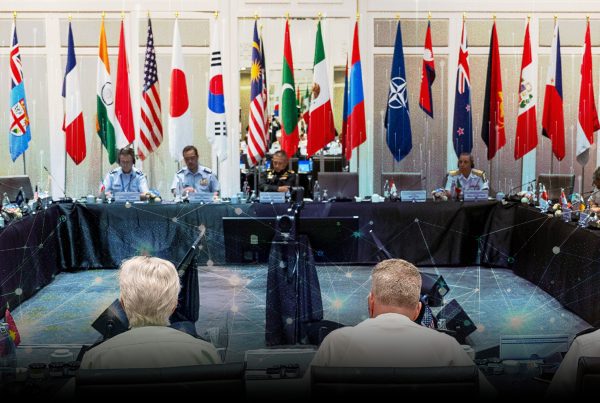A Case Study on Establishing Secure, Cloud-Based Environments for Multinational Coordination and Collaboration
The Challenge
A Lack of Secure, Unified Collaboration for Partner Nations
In the opening weeks of a fast-moving geopolitical crisis in early 2022, an international coalition of the willing was formed to deliver security assistance to an allied region under attack. The coalition responded quickly, sending tanks, ammunition, medical supplies, and even winter coats, but visibility was limited. Without a shared system, how could teams keep track of what had arrived and where it was needed? How do you operate a tank with instructions in a different language? How do you present a united front when partners don’t even speak the same language?
With lives on the line and operations at risk, more than 32 partner nations needed to synchronize the delivery of training, logistics, equipment, and sustainment support. However, fragmented spreadsheets and unsecured emails were no match for the urgency of the moment. The mission demanded more than speed; it demanded trust, accessibility, and interoperability on a global scale.
The Solution
Rapidly Deployed Mission Partner Environments
To address this urgent capability gap, a defense-focused digital innovation office, in coordination with a major geographic combatant command, began working toward procuring a solution that would support multinational collaboration without specialized hardware or the need to lay down an entirely new network. Ultimately, ECS answered the call to rapidly implement a scalable, secure digital environment tailored for the mission’s need.
Drawing on its experience of developing and managing secure, unclassified federal partner environments for collaboration, ECS deployed a cloud-native platform designed to operate at mission speed. The environment was provisioned within weeks, offering onboarding in hours without requiring specialized credentials or government-issued hardware, which was essential for accessibility across diverse international users.
Purpose built around trusted commercial tools like Microsoft 365 (including Teams and SharePoint) and Power BI, Atlassian JIRA, Confluence, Databricks, and Qlik, the platform was accredited for U.S. CUI and U.K. Official Sensitive standards and featured modular integrations to meet dynamic operational needs, including:
- A machine translation tool built as a cloud-native application and adapted to meet the needs of more than 400 users and support more than 130 languages (essential for operational alignment)
- Built-in data visualization via Power BI
- Secure, large language model (LLM) capabilities to support advanced analytics and decision-making
The Results
Redefining How Coalition Forces Share, Track, and Act on Critical Information
The platform now supports hundreds of daily users managing over 10,000 live files in a constantly evolving mission environment, as well as:
- Coordination of more than 1,000 multinational training events
- Central access to thousands of manuals and operational documents in over 15 languages
- Real-time collaboration and secure document management across allied entities
Mission partners have called the environment a “critical enabler” of operational success, offering speed, security, and interoperability at a scale previously unattainable through traditional systems.
From Capability Gap to Gold Standard
What began as a rapid response in a time of crisis has since evolved into a powerful model for secure, scalable, multinational collaboration. Its impact is proof that with the right technology and the right partner, digital transformation in defense environments doesn’t have to wait years, it can happen in weeks.
It can — it must — move at the speed of the mission.




